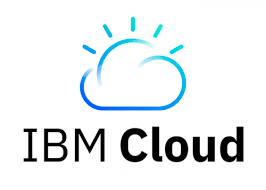Enterprise Application Development
Enterprise Application Development (EAD) refers to the process of designing, building, deploying, and maintaining large-scale software solutions that meet the complex and varied needs of businesses or organizations. These applications are typically tailored to integrate with existing systems, streamline business processes, improve operational efficiency, and enable better decision-making at the enterprise level. Unlike consumer-facing applications, enterprise applications are designed to meet the internal needs of businesses and often have to handle large volumes of data, numerous users, and multiple processes simultaneously.

Why Choose Our Cloud Solutions?
We modernize infrastructure, streamline outdated processes, and optimize cloud assets to build future-ready ecosystems.
Technology We Use

AWS

IBM Cloud

Google Cloud

Microsoft Azure
Understanding Enterprise Applications
Enterprise applications are software systems used by organizations to support and automate core business processes such as customer relationship management (CRM), supply chain management (SCM), enterprise resource planning (ERP), financial management, and human resource management. These applications often include both internal-facing components (used by employees) and external-facing elements (used by customers, suppliers, or partners).
Scalability
They must be able to handle a large number of concurrent users and scale as the business grows.
Security
Given the sensitive nature of enterprise data, security is a critical consideration.
Integration
Enterprise applications need to integrate with other existing applications, databases, and systems.
Customization
They are highly customized to meet the specific business needs of the organization.
Robustness
They must be reliable and capable of supporting mission-critical operations without failure.
Types of Enterprise Applications
Enterprise Resource Planning
ERP systems manage core business functions such as finance, human resources, procurement, and supply chain management. Examples include SAP, Oracle ERP, and Microsoft Dynamics.
Customer Relationship Management
CRM systems manage interactions with customers, sales tracking, marketing automation, and customer service. Examples include Salesforce, HubSpot, and Microsoft Dynamics CRM.
Supply Chain Management
SCM systems focus on managing the flow of goods, services, and information throughout the supply chain. Examples include SAP SCM and Oracle SCM Cloud.
Human Resource Management Systems
These applications manage employee data, recruitment, payroll, performance evaluations, and compliance. Examples include Workday and ADP.
Business Intelligence (BI) Applications
These tools help businesses collect, analyze, and visualize data to make informed decisions. Examples include Tableau, Power BI, and IBM Cognos.
Content Management Systems
Enterprise-level CMS solutions help businesses manage digital content and workflows. Examples include SharePoint and Drupal.
Phases of Enterprise Application Development
Requirement Analysis
In this phase, developers, business analysts, and stakeholders work together to define the core business requirements and goals. The focus is on identifying the challenges the application will address and how it will improve business operations.
Design & Architecture
Once requirements are gathered, the design phase begins. The architecture is carefully planned to ensure scalability, flexibility, and security. It is essential to create an architecture that supports integration with other enterprise systems and can handle the business's needs at scale.
Development & Implementation
During this phase, developers start coding the application. The development team uses a variety of programming languages and frameworks, which might include Java, .NET, Python, Angular, React, or others, depending on the project's requirements.
Integration
Integration is a key aspect of enterprise applications. The application must seamlessly connect with existing enterprise systems Integration technologies like APIs, middleware, and microservices are often used to ensure data flows smoothly between different systems.
Testing
The application undergoes various forms of testing, including functional testing, performance testing, security testing, and user acceptance testing (UAT). This ensures that the application works as expected and meets business requirements.
Deployment
The application is deployed to a production environment. This involves setting up the infrastructure, ensuring the environment is optimized, and ensuring the application is accessible to users.
Technologies in Enterprise Application Development
Programming Languages and Frameworks
Java Commonly used for backend development due to its scalability and robustness. NET Often used for enterprise applications, particularly in environments where Microsoft technologies are preferred
Database Management Systems (DBMS)
Relational Databases SQL Server, Oracle Database, MySQL, and PostgreSQL are commonly used for transactional applications. NoSQL Databases MongoDB, Cassandra, and other NoSQL databases are useful for applications with high scalability needs and unstructured data.
Cloud Computing Platforms
Amazon Web Services (AWS) Provides a comprehensive suite of cloud services for building, deploying, and maintaining enterprise applications. Microsoft Azure Offers enterprise-grade solutions for cloud-based app development, hosting, and scalability.
Microservices Architecture
Microservices allow an enterprise application to be broken down into smaller, independently deployable services. This enhances scalability, maintainability, and flexibility.
API Management
APIs are critical for integrating third-party applications and services. Tools like Apigee, AWS API Gateway, or Microsoft Azure API Management help streamline API management.
Benefits of Enterprise Application Development
- Improved Efficiency Custom-built enterprise applications streamline business operations, reducing manual work and enhancing productivity.
- Better Decision-Making With integrated data across the organization, enterprises gain valuable insights for better decision-making.
- Customization Tailored solutions that align closely with business needs, ensuring the application delivers maximum value.
- Scalability Enterprise applications are designed to grow with the business, adapting to increasing user loads and expanding data requirements.
- Security and Compliance Enterprises need to manage sensitive data, and custom applications provide enhanced security controls and regulatory compliance.
